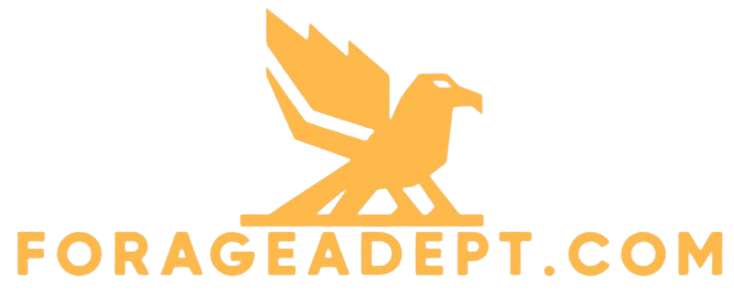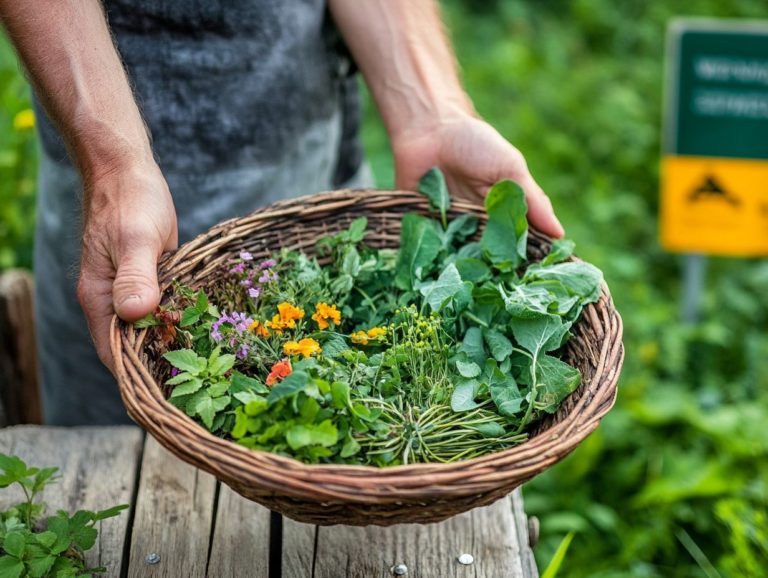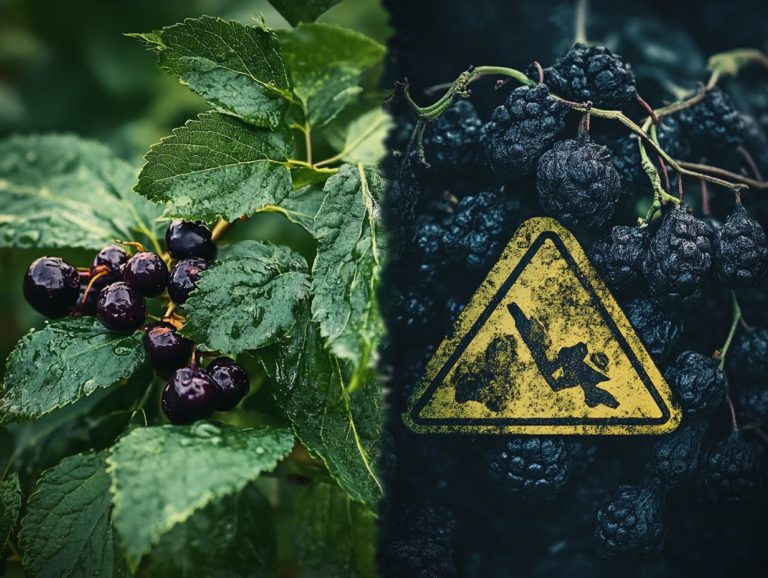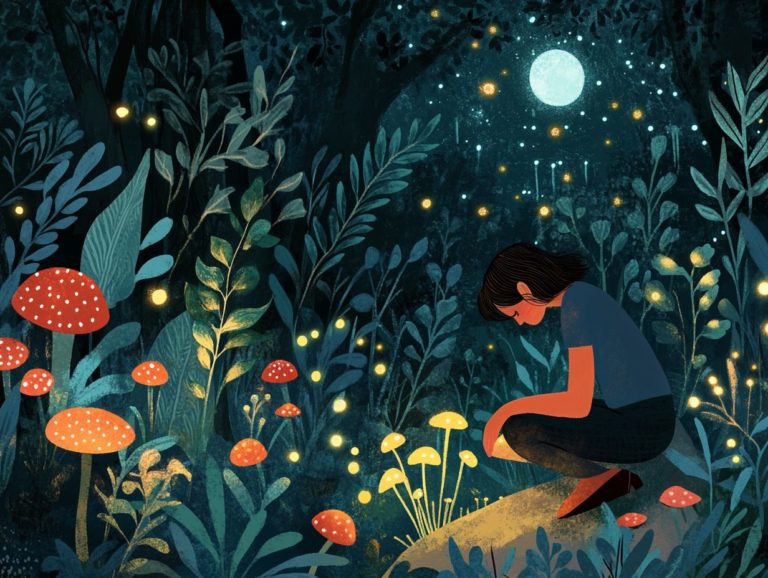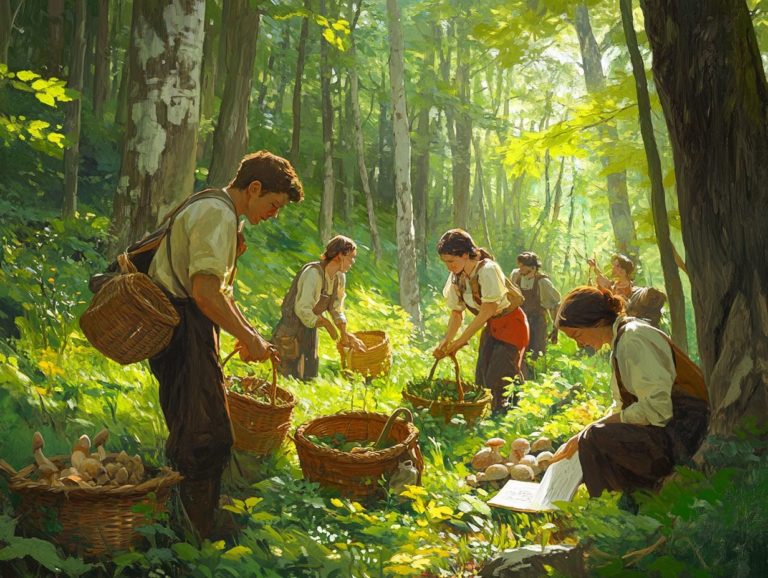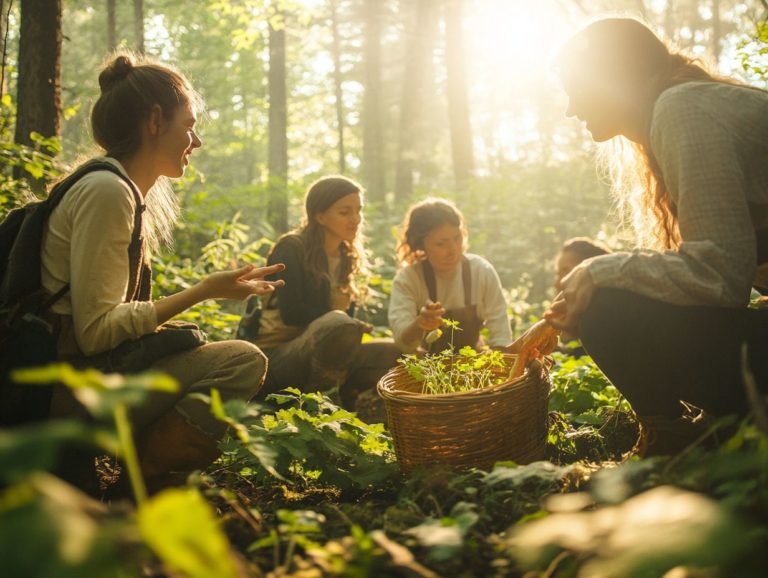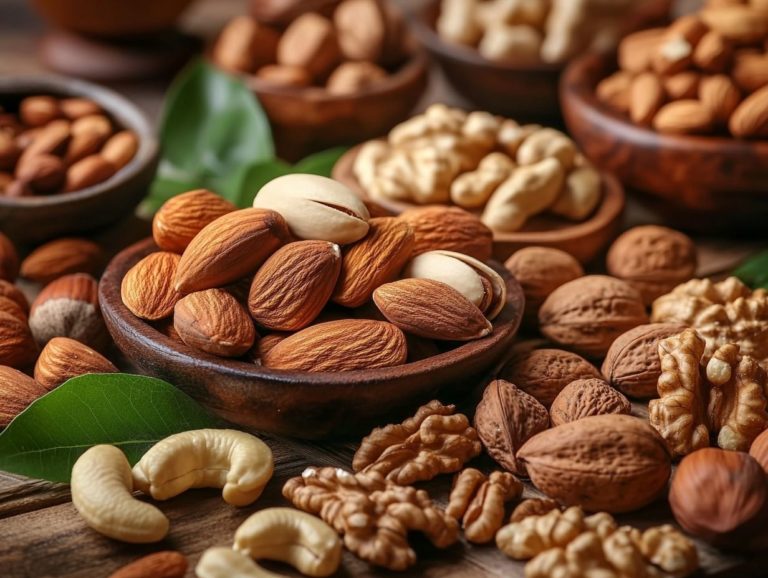Can I Forage in National Parks?
Foraging in national parks, including places like Shenandoah National Park, offers an exhilarating opportunity to connect with nature. However, it carries its own set of guidelines and considerations you must heed.
This guide will arm you with the essentials, from understanding the harvesting regulations that protect these precious environments to identifying the common species of plants and mushrooms you may encounter on your journey.
Crucial safety tips will ensure your foraging adventure is enjoyable and responsible. If foraging isn t your style, fear not there are other ways to enjoy nature s bounty that we will explore as well.
Ready to embark on this adventure?
Contents
- Key Takeaways:
- Foraging in National Parks: What You Need to Know About Collecting Data
- Edible Plants and Fungi in National Parks
- Foraging Safety in National Parks
- Alternatives to Foraging in National Parks
- Frequently Asked Questions About Foraging
- Can I Forage in National Parks?
- Why can’t I forage in National Parks?
- What is considered foraging in National Parks and how does it impact the local ecosystem?
- Can I eat the berries or plants I find in National Parks?
- Are there any exceptions to the no foraging rule in National Parks?
- What can I do if I want to learn more about foraging in National Parks?
Key Takeaways:
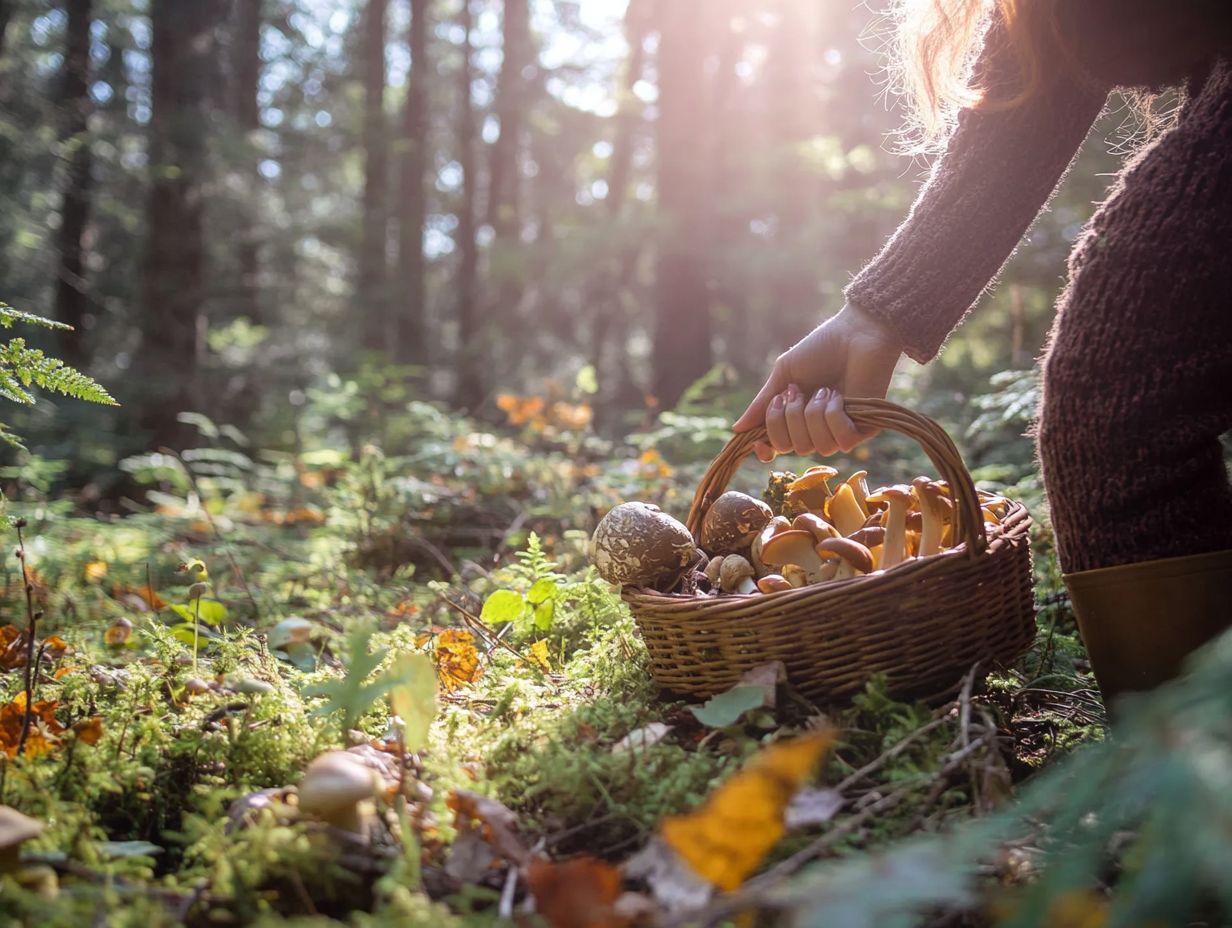
- Before foraging in national parks, make sure to check if it’s allowed and understand the government regulations in the specific park you are visiting.
- Familiarize yourself with the edible plants and fungi in national parks, including mushrooms that can be used for health purposes, before attempting to forage.
- Always prioritize safety when foraging in national parks. Take precautions to avoid potential hazards and monitor your health while engaging with the ecosystem.
Foraging in National Parks: What You Need to Know About Collecting Data
Foraging in National Parks, like Shenandoah National Park, presents a remarkable opportunity to immerse yourself in nature while discovering the diverse ecosystem and the edible plants that flourish in these protected areas.
Understanding the rules established by the National Park Service is crucial for engaging responsibly with local species and maintaining ecological balance. This knowledge fosters community engagement and enhances public enjoyment while supporting environmental protection, biodiversity, and nutrient cycling.
Mastering proper foraging techniques allows for sustainable harvesting of wild foods, including wild grapes, ensuring that future generations can also partake in nature’s abundant offerings.
Understanding the Rules and Regulations
Knowing the rules and regulations set forth by the National Park Service is essential for you as a forager who aims to harvest wild foods for personal use responsibly within park boundaries. This awareness ensures that you understand the specific harvesting limits, including the quantity restrictions you can collect, which are detailed in the superintendent s compendium.
Adhering to these guidelines is not just a formality; it helps minimize your environmental impact and promotes the long-term sustainability of these valuable natural resources, including protecting wildlife habitats. Familiarize yourself with local regulations to prevent overharvesting and protect sensitive ecosystems. By respecting these laws, you contribute to conservation efforts and help maintain the delicate balance within natural habitats, supporting forest health and overall ecosystem well-being.
Edible Plants and Fungi in National Parks
National Parks boast a remarkable assortment of edible plants and fungi, including medicinal mushrooms, giving you the chance to engage with unique species that play a vital role in local biodiversity and the overall health of the ecosystem.
This is your opportunity to explore nature and embrace the rich tapestry of life, including the plant life that thrives within these protected areas.
Common Species and Their Uses
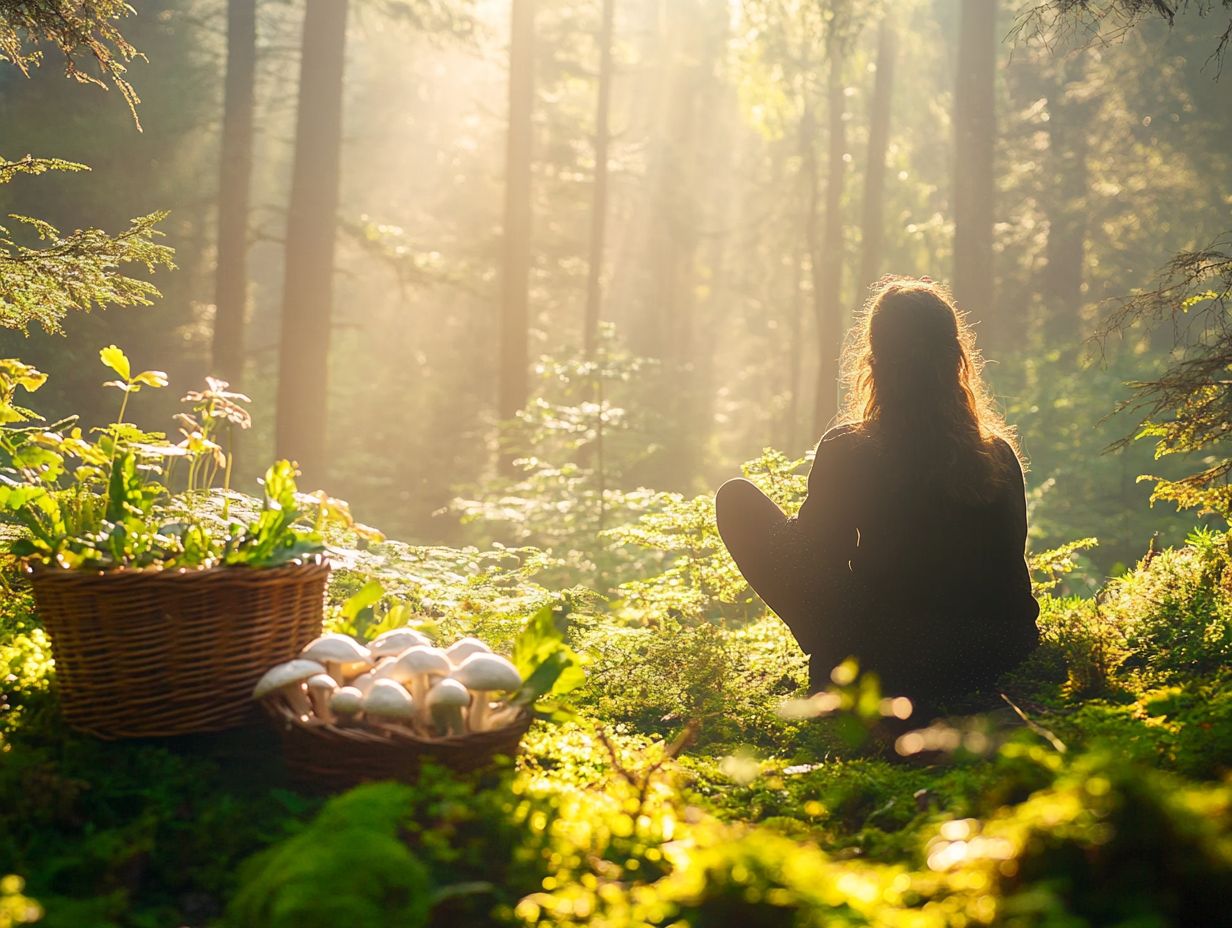
Common species of edible plants and mushrooms found in national parks, including wild garlic and chanterelles, present you with a world of cooking options. These greatly enrich the wild food culture while offering health benefits worth noting.
These flora and fungi serve as versatile ingredients for an array of dishes, from hearty soups to colorful salads. They pack a punch of nutritional value to enhance your overall well-being and support health monitoring. Take wild garlic it can transform a mundane meal and bolster your immunity at the same time!
Foraged mushrooms like chanterelles bring a depth of flavor along with their antioxidant properties, making your dishes not only delicious but also nourishing.
As you engage in foraging and cooking with these local edibles, you ll forge a deeper connection with nature. This communal experience fosters an appreciation for nature s bounty, including seasonal vegetation, while helping the foraging community stay sustainable.
It encourages you to pay attention to your health through mindful eating habits and to explore seasonal ingredients that nurture both body and spirit.
Foraging Safety in National Parks
Foraging is an exciting adventure waiting for you! However, it s crucial to prioritize safety at all times to protect yourself and the local ecosystem. National parks have fragile ecosystems. It’s important to manage public access carefully.
You must take certain precautions to protect both yourself and the wildlife habitats you encounter.
Precautions and Tips for Safe Foraging
Taking precautions while foraging is essential for your safety. You can boost your confidence by identifying plants through spore prints, a method of identifying mushrooms by capturing their spores on paper, or asking experienced foragers for help. This promotes sustainability within the foraging community.
Understanding the specific characteristics of edible species and invasive species is crucial. Many edible plants have toxic look-alikes that could pose serious health risks. To navigate this, consider carrying field guides or using mobile apps designed for plant identification; they can be invaluable resources for keeping track of your fungi inventory.
Being aware of your surroundings local wildlife, weather changes, and potential environmental hazards is vital as you explore natural areas in search of wild edibles. Practicing sustainable harvesting techniques, like only taking what you need, preserves ecosystems and ensures that your adventures remain enjoyable and responsible.
Alternatives to Foraging in National Parks
If you prefer not to forage, rest assured that there are countless alternatives to immerse yourself in the beauty of nature and appreciate the natural landscapes. You can savor local foods while partaking in recreational activities that foster community engagement and contribute to environmental protection.
Other Ways to Experience Nature and Local Foods
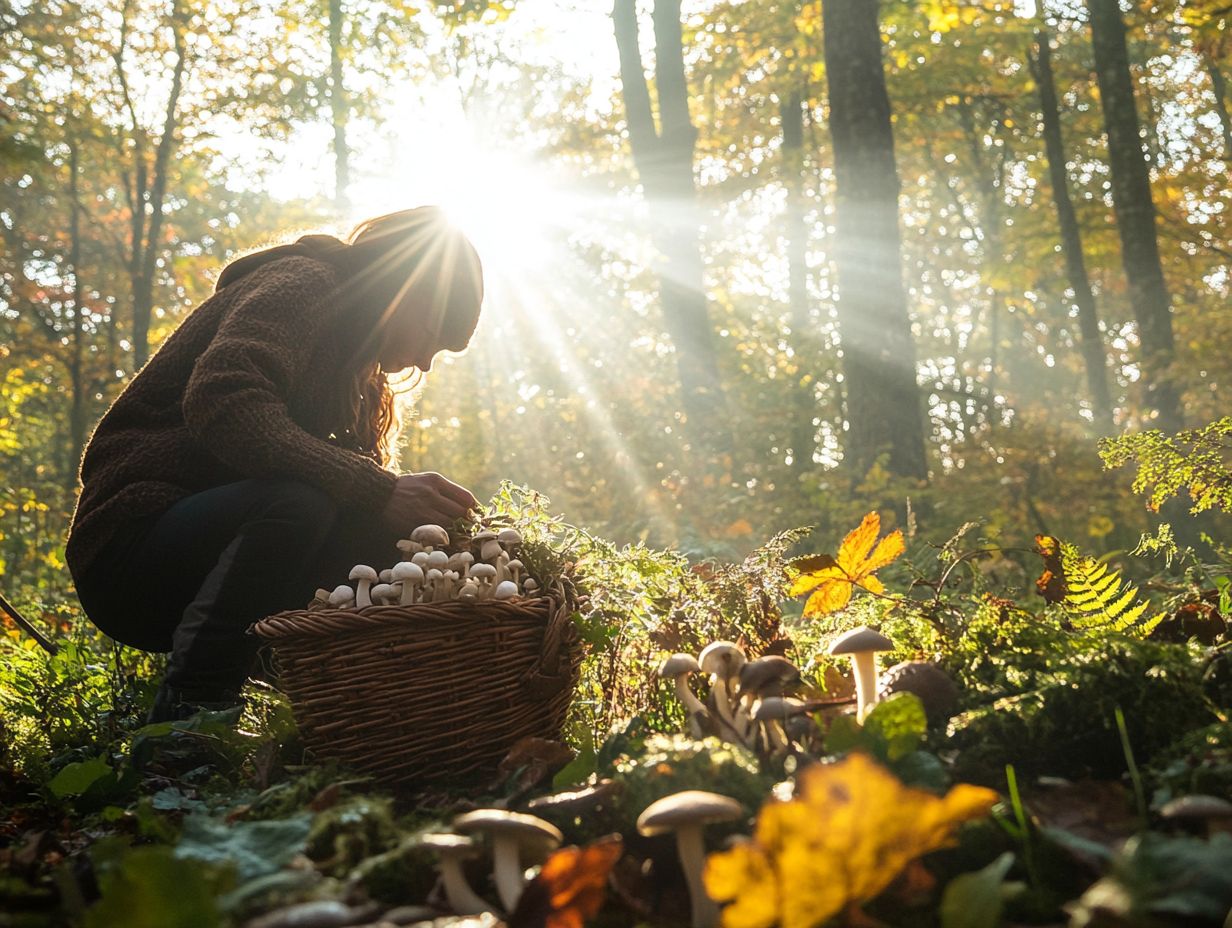
Experiencing nature and savoring local foods can be much more than just foraging; it s about immersing yourself in community activities that highlight environmental awareness and the beauty of natural landscapes.
You might find yourself on guided hikes that take you through breathtaking trails. These hikes also enlighten you about native plants and sustainable farming methods that work with nature. Wildlife encounters let you appreciate local animals and learn about their importance.
Participating in educational workshops on organic gardening and collecting data on local species enables you to cultivate your own food, deepening your connection to local agriculture.
Collectively, these experiences create a vibrant sense of community, where you can share your stories and forge relationships built on a shared dedication to preserving the environment and supporting local ecosystems. Get involved today and help protect our local ecosystems!
Frequently Asked Questions About Foraging
Can I Forage in National Parks?
No, it is not allowed to forage in National Parks. These parks exist to protect and preserve the natural environment, including plants and animals. Foraging can disrupt the ecosystem and harm the plants and animals living in the park. To learn more about foraging rules, check out the legalities of foraging.
Why can’t I forage in National Parks?
Foraging is not allowed in National Parks because it can damage the natural environment. However, you might wonder, can I forage in urban areas? The plants and animals in the park rely on each other for survival, and foraging can disrupt this delicate balance.
What is considered foraging in National Parks and how does it impact the local ecosystem?
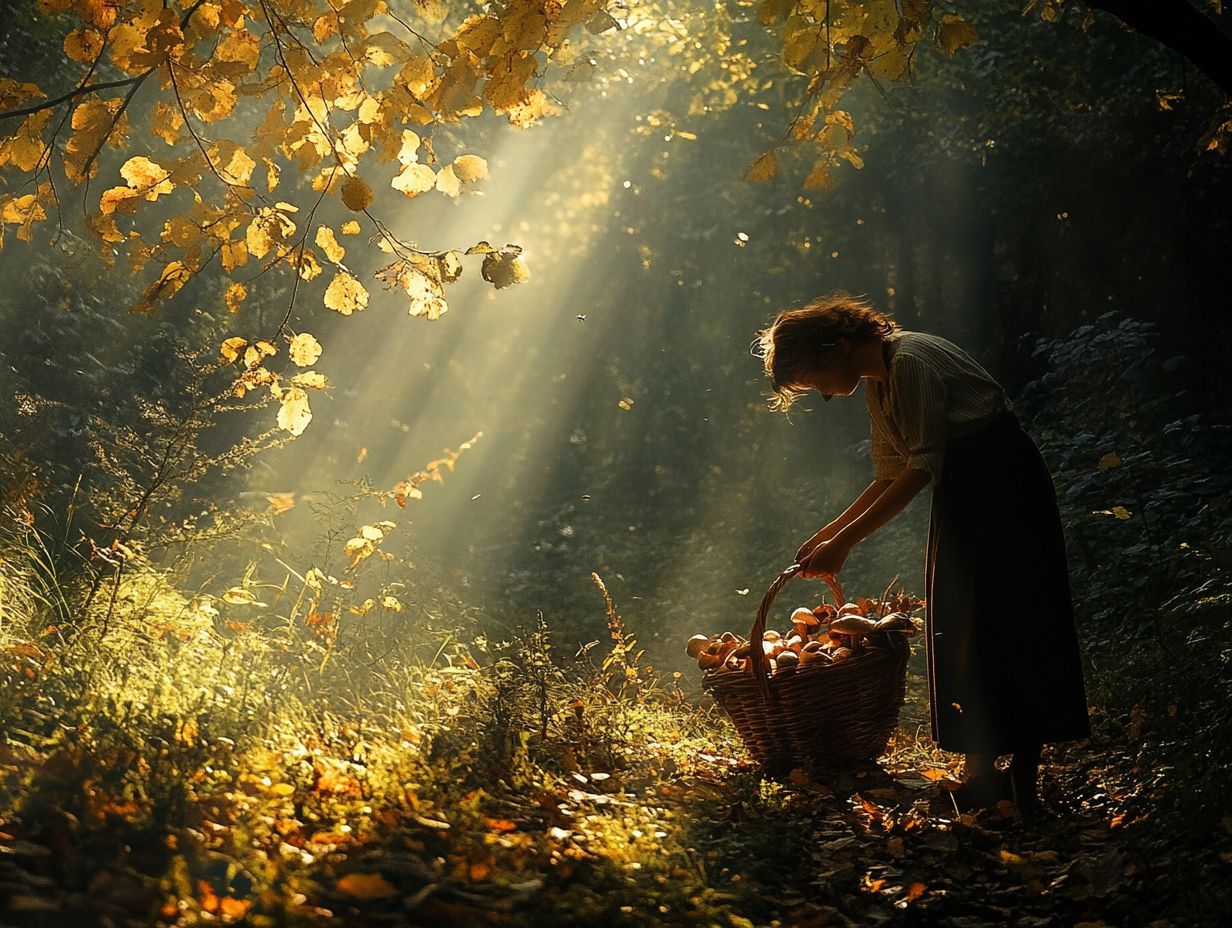
Foraging in National Parks includes picking or collecting any plants, berries, or other natural materials, including edible wildlife. To ensure you’re well-informed, consider reading about foraging in national parks: techniques & tips, which also covers important guidelines like disturbing the soil or removing any objects from the park.
Can I eat the berries or plants I find in National Parks?
No, it is not safe to consume any plants or berries found in National Parks due to potential contamination or the presence of toxic look-alikes. They may be poisonous or contaminated, and there is also a risk of damaging the ecosystem by consuming these resources.
Are there any exceptions to the no foraging rule in National Parks?
There are no exceptions to the rule against foraging in National Parks, as it is essential for preserving the natural environment and maintaining ecosystem health. However, some parks may allow foraging with a special permit for scientific or educational purposes. For those interested in learning more, finding foraging workshops in national parks can offer valuable insights, though this is not common.
What can I do if I want to learn more about foraging in National Parks?
Although foraging is not allowed, you can still learn about the plants and animals in National Parks through guided tours, educational programs, research findings, and information sessions offered by park rangers. Don t miss out on learning about the incredible plants and animals in our National Parks!
